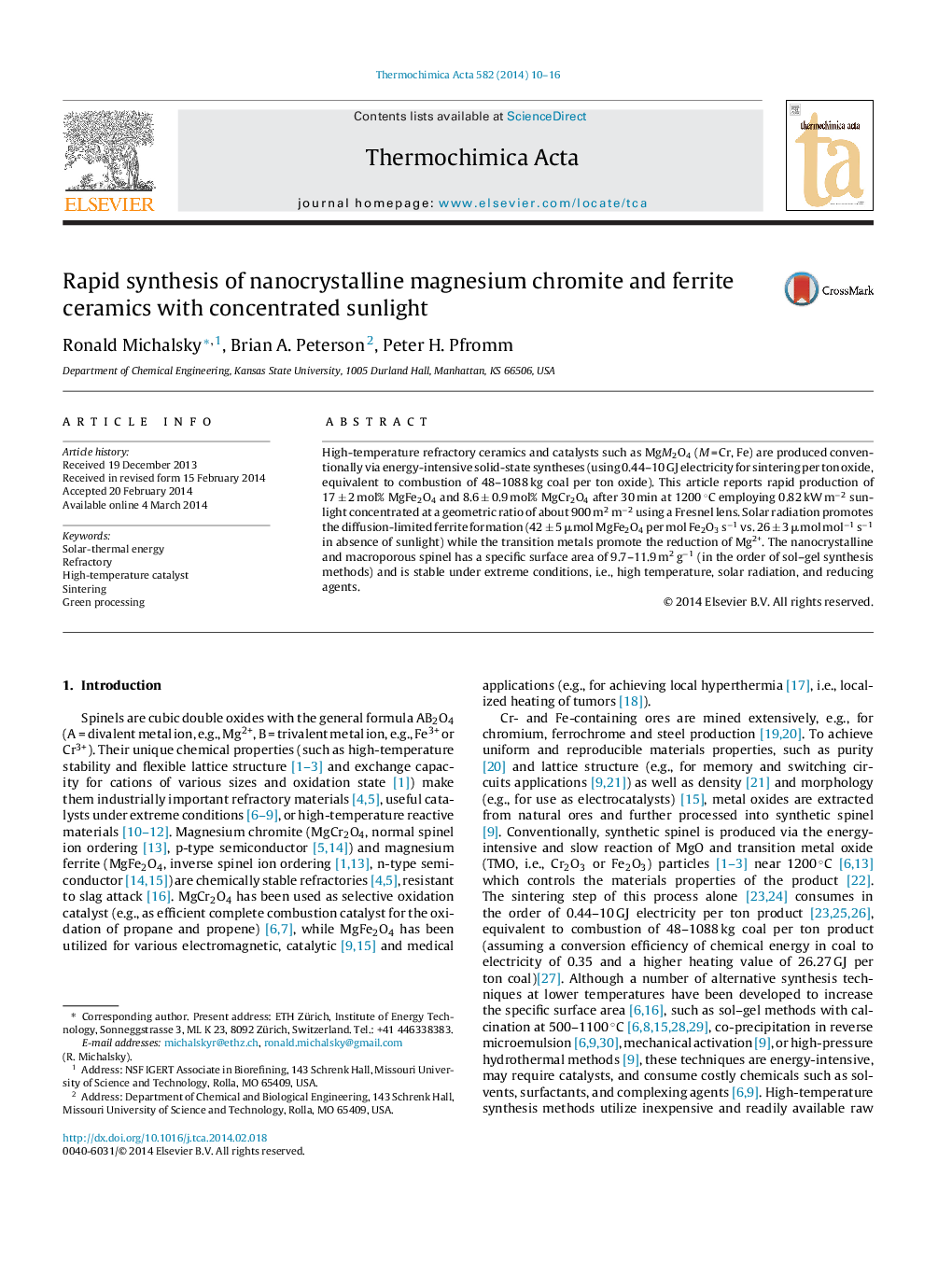| Article ID | Journal | Published Year | Pages | File Type |
|---|---|---|---|---|
| 673399 | Thermochimica Acta | 2014 | 7 Pages |
Abstract
High-temperature refractory ceramics and catalysts such as MgM2O4 (M = Cr, Fe) are produced conventionally via energy-intensive solid-state syntheses (using 0.44-10 GJ electricity for sintering per ton oxide, equivalent to combustion of 48-1088 kg coal per ton oxide). This article reports rapid production of 17 ± 2 mol% MgFe2O4 and 8.6 ± 0.9 mol% MgCr2O4 after 30 min at 1200 °C employing 0.82 kW mâ2 sunlight concentrated at a geometric ratio of about 900 m2 mâ2 using a Fresnel lens. Solar radiation promotes the diffusion-limited ferrite formation (42 ± 5 μmol MgFe2O4 per mol Fe2O3 sâ1 vs. 26 ± 3 μmol molâ1 sâ1 in absence of sunlight) while the transition metals promote the reduction of Mg2+. The nanocrystalline and macroporous spinel has a specific surface area of 9.7-11.9 m2 gâ1 (in the order of sol-gel synthesis methods) and is stable under extreme conditions, i.e., high temperature, solar radiation, and reducing agents.
Keywords
Related Topics
Physical Sciences and Engineering
Chemical Engineering
Fluid Flow and Transfer Processes
Authors
Ronald Michalsky, Brian A. Peterson, Peter H. Pfromm,
